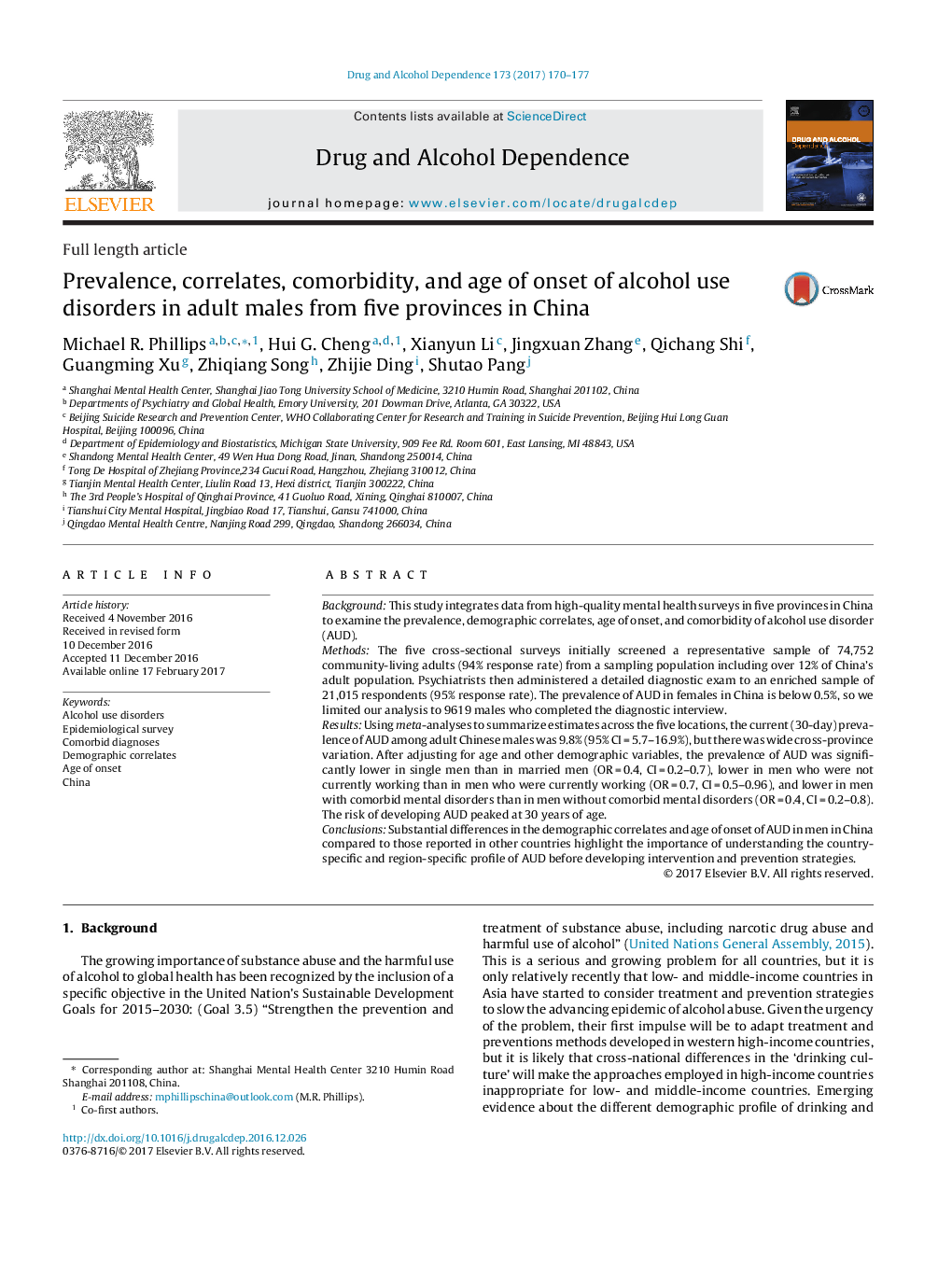| Article ID | Journal | Published Year | Pages | File Type |
|---|---|---|---|---|
| 5120166 | Drug and Alcohol Dependence | 2017 | 8 Pages |
â¢Data from 5 large representative epidemiologic surveys in China were meta-analyzed.â¢The prevalence, correlates and age of onset of AUD in Chinese males were estimated.â¢The demographic profile of AUD varied from that in western high-income countries.â¢The peak age of onset of AUD was much older than that reported in other countries.
BackgroundThis study integrates data from high-quality mental health surveys in five provinces in China to examine the prevalence, demographic correlates, age of onset, and comorbidity of alcohol use disorder (AUD).MethodsThe five cross-sectional surveys initially screened a representative sample of 74,752 community-living adults (94% response rate) from a sampling population including over 12% of China's adult population. Psychiatrists then administered a detailed diagnostic exam to an enriched sample of 21,015 respondents (95% response rate). The prevalence of AUD in females in China is below 0.5%, so we limited our analysis to 9619 males who completed the diagnostic interview.ResultsUsing meta-analyses to summarize estimates across the five locations, the current (30-day) prevalence of AUD among adult Chinese males was 9.8% (95% CIÂ =Â 5.7-16.9%), but there was wide cross-province variation. After adjusting for age and other demographic variables, the prevalence of AUD was significantly lower in single men than in married men (ORÂ =Â 0.4, CIÂ =Â 0.2-0.7), lower in men who were not currently working than in men who were currently working (ORÂ =Â 0.7, CIÂ =Â 0.5-0.96), and lower in men with comorbid mental disorders than in men without comorbid mental disorders (ORÂ =Â 0.4, CIÂ =Â 0.2-0.8). The risk of developing AUD peaked at 30 years of age.ConclusionsSubstantial differences in the demographic correlates and age of onset of AUD in men in China compared to those reported in other countries highlight the importance of understanding the country-specific and region-specific profile of AUD before developing intervention and prevention strategies.
